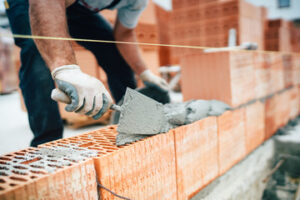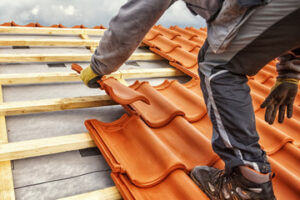Haircut San Francisco is trimming or clipping one’s hair to achieve a desired style. Hairstyles reflect personal preferences, cultural traditions, and facial features.
The best haircut for your face shape depends on the texture and density of your hair and its shape. But geometry is also a factor.

Whether you’re in the market for a short hairstyle or simply want to update your current look, it’s important to find the right style that flatters your face shape and hair texture. To help you decide, we asked three renowned hairstylists—Tatiana Ramos (All-Texture Specialist and National Artist for Pureology), Bernardo Vasconcelos (Covet & Mane Educator and celebrity stylist), and Xavier Velasquez (Hairstylist at Jenna Perry Hair in NYC)—to share their top tips for choosing the best short haircut.
When it comes to short hairstyles, the options are endless! Side-swept bangs, stacked bobs, and pixie cuts with choppy layers are some of the most popular styles that can add volume and lift to your look. If you have fine hair, ask your stylist to keep the perimeter blunt and add long or short textured layers throughout to boost volume. A little mousse (like the Suave Professionals Natural Volume Mousse) helps to give your pixie or lob a tousled, piecey look. As a bonus, a shorter cut requires less styling and maintenance than longer styles!
Medium
Whether you want to keep it sleek and straight or add some texture, the medium hairstyle can be styled to suit your personal aesthetic. Try a piecey fringe like Rihanna for added interest, or add bangs to your lob to soften the shape of your face.
If you have thick hair, consider a voluminous look with the classic pompadour, like Clyde Haygood did for Zendaya, or opt for a softer variation with a deep side part that’s combed to the opposite side. A choppy bob with shaggier layers is another great option for wavy hair, as seen on Laura Harrier.
The layered lob with straight-across bangs is one of the most popular medium haircuts for women, and it can be worn slicked back when you’re feeling polished or mussed up for a more casual vibe (like Suki Waterhouse). A gentle shadow root effect—like Sydney Sweeney’s buttery brown roots that melt into her golden locks—will help to pump up volume in thin hair, as will a light layering of volumizing pomade or putty.
Long
For those with long hair, a layered haircut can add a lot of volume and texture. This style shows off multiple layers that blend seamlessly and create movement in your locks. If you want to keep your length but still have a fuller look, ask for your stylist to use thinning shears to blend out the ends of each layer.
The long hair tradition was popularized by the social revolution of the 1960s, when unchecked hair growth became a counterculture symbol and protest. Certain types of long hair, such as dreadlocks, have continued to be used by groups seeking to define their own alternative culture and lifestyles.
A bob cut with long layers can be a chic and sophisticated formal style. It works well on most hair colors, and is a great choice for anyone who doesn’t want to lose their length but wants to refresh their look without cutting it short. For a more dramatic look, you can try adding waves to the front to frame your face or give it an extra touch of sexiness with soft side-swept bangs.
Layers
Aside from being the hottest trend in hair right now, layers are also very flattering for all face shapes. If you have a heart-shaped face, you want to emphasize your cheekbones and take away from the width of your forehead with long, face-framing layers that start at your jawline. Wispy or curtain bangs are also great choices for heart-shaped faces as they will soften the overall shape of your face and take attention away from your forehead.
For those with a square or oval face shape, you can elongate the length of your facial features with longer face-framing layers that fall just below the chin. You can also use a curling wand to create loose waves or scrunch your hair for a more casual look with long, layered layers.
Layers are low maintenance, but you will need to regularly trim your strands for a polished finish. You should also moisturize your hair regularly with a moisturizing shampoo and conditioner to avoid dryness. To maintain a voluminous, layered cut that’s not too boxy, use a hair wax that will add texture and hold while still maintaining a natural finish like Style Masters(tm) Creator Fiber Wax(tm). It’s available in multiple styles and finishes to suit your individual style.
Shag
The shag is the perfect cut for those with naturally wavy hair. You can let your strands air dry or blow them out for a more pronounced wave and texture. Either way, a little product helps your tresses stay in place without looking flat or overdone. Try a salt spray or, for curly or textured hair, curl cream to create loose bends and movement in your layered locks.
For a ’70s-inspired look, ask for extra-long layers that flip up at the ends. Copper highlights add a touch of glam to this medium-length shag, while wispy bangs frame the face for a balanced aesthetic.
While it may take time to find a stylist who specializes in the shag haircut, Evans suggests searching for a stylist who has experience with retro cuts on Instagram to get a head start. Once you’ve found a stylist, be sure to prep your strands with Reverie Mare for volume and a salt spray to improve your hair texture before cutting. After you’ve finished washing, let your strands air dry to help your shag retain its shape.
Lob
For those who can’t quite commit to a pixie cut, but aren’t ready to rock a long bob, a shoulder-length lob is the perfect compromise. This stylish hair cut flatters most face shapes and works for any hair texture.
A long lob with a deep side part is great for fine hair as it creates volume up top and conceals thinning hair. It also works well on wavy hair as it helps to smooth out the shape while adding body. For a softer and more natural look, add a subtle balayage to your lob. This two toned style is soft, sweet and oh-so-natural.
If you’re looking for something a little more sleek, try a classic straight lob. Just make sure to use a heat protectant when blow drying and you’re good to go! Alternatively, you can add some texture to your lob with loose beachy waves. Just tuck your hair behind your ears and finish with a touch of hairspray like Laura Harrier for that effortless look. It’s a perfect style for when you want to feel laid back.
Bob
As a classic haircut it’s hard to go wrong with a bob. This flattering, versatile style can be worn with bangs or soft waves for a lived-in look. It’s also a crowd-pleaser for fine hair as it helps give the impression of a fuller head of locks.
It can be molded to flatter almost any face shape with its symmetrical, streamlined lines. However, this is a hairstyle that requires a lot of maintenance. Especially if you choose to use a heat styling tool. Using too much heat can damage your short strands, so make sure to keep it in mind and only apply heat when necessary.
The bob has been an iconic cut for women for centuries, and its popularity continues to grow. The style became famous in the 1910s when it was favored by flappers and other women who rejected traditional gender norms, embodied by Joan of Arc’s transformative image. The bob was the perfect look for a modern, independent woman who was determined to change her world. The bob has since been adapted to suit the changing times, and is now one of the most popular cuts in the world.
Pixie
The pixie haircut has been making waves across the fashion world, allowing women of all ages to make a bold style statement with their hair. This edgy short hairstyle can flatter many face shapes and is versatile enough to be worn for work or play. However, a cut this short requires precise skills and precision to achieve the desired look. Here are a few tips to help you nail the pixie haircut on your first try.
Whether you’re looking to channel Betty Boop with a slicked-down pixie or create a retro mod feel with Kerry Washington’s side-swept bangs, short hair can be extremely feminine when textured with sculpting gel. For a sexy yet chic style, add a dainty headband like Lupita Nyong’o’s to pull your hair back and out of your face.
The pixie haircut can be worn with any type of hair texture, including curly hair. Just be sure to use products specifically formulated for curly hair to keep your locks moisturized. And, don’t forget to schedule regular trims to maintain the shape of your pixie cut.




